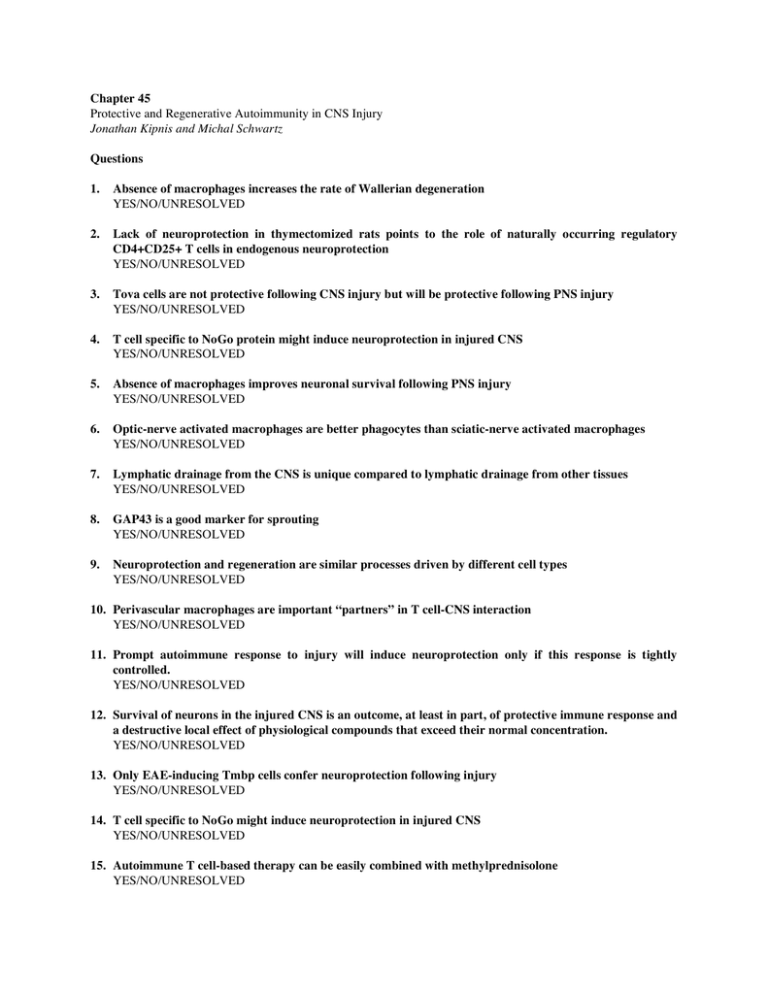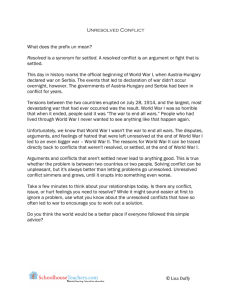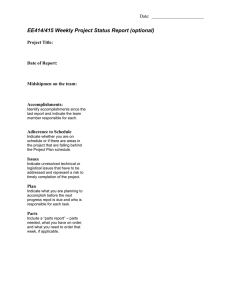Chapter 45 Questions
advertisement

Chapter 45 Protective and Regenerative Autoimmunity in CNS Injury Jonathan Kipnis and Michal Schwartz Questions 1. Absence of macrophages increases the rate of Wallerian degeneration YES/NO/UNRESOLVED 2. Lack of neuroprotection in thymectomized rats points to the role of naturally occurring regulatory CD4+CD25+ T cells in endogenous neuroprotection YES/NO/UNRESOLVED 3. Tova cells are not protective following CNS injury but will be protective following PNS injury YES/NO/UNRESOLVED 4. T cell specific to NoGo protein might induce neuroprotection in injured CNS YES/NO/UNRESOLVED 5. Absence of macrophages improves neuronal survival following PNS injury YES/NO/UNRESOLVED 6. Optic-nerve activated macrophages are better phagocytes than sciatic-nerve activated macrophages YES/NO/UNRESOLVED 7. Lymphatic drainage from the CNS is unique compared to lymphatic drainage from other tissues YES/NO/UNRESOLVED 8. GAP43 is a good marker for sprouting YES/NO/UNRESOLVED 9. Neuroprotection and regeneration are similar processes driven by different cell types YES/NO/UNRESOLVED 10. Perivascular macrophages are important “partners” in T cell-CNS interaction YES/NO/UNRESOLVED 11. Prompt autoimmune response to injury will induce neuroprotection only if this response is tightly controlled. YES/NO/UNRESOLVED 12. Survival of neurons in the injured CNS is an outcome, at least in part, of protective immune response and a destructive local effect of physiological compounds that exceed their normal concentration. YES/NO/UNRESOLVED 13. Only EAE-inducing Tmbp cells confer neuroprotection following injury YES/NO/UNRESOLVED 14. T cell specific to NoGo might induce neuroprotection in injured CNS YES/NO/UNRESOLVED 15. Autoimmune T cell-based therapy can be easily combined with methylprednisolone YES/NO/UNRESOLVED 45. Protective and Regenerative Autoimmunity in CNS Injury Jonathan Kipnis and Michal Schwartz 2 16. Which one of the following statements is the most unlikely? a. Dopamine may affect CD4+ T cells b. Dopamine may affect Treg cells c. Treatment with Dopamine might exacerbate cancer d. Treatment with Dopamine might exacerbate autoimmune disease 17. Wild type Balb/c mice were injected with autologous carcinoma cells. One group was treated with Dopamine and the other with PBS. Mice are euthanized when cancer reaches 2 cm in size. The plot of survival of mice as a function of time is presented bellow. Which of the following statements is correct? a. Group 1 was injected with PBS and group 2 with Dopamine b. Group 1 was injected with Dopamine and group 2 with PBS c. Additional information is required to address this question d. None of the above Group 1 Group 2 Days 18. Multiple sclerosis patient was treated with a new cellular therapy – activated CD4+ T cells from this patient were isolated (based on the selection for CD25+), anergized in-vitro on immature dendritic cells and returned to the patient’s blood stream. This patient has also colon cancer. Which one of the following statements is the most likely? a. The treatment may exacerbate the ongoing MS disease b. The treatment may exacerbate the ongoing colon cancer c. The treatment will not affect any of the conditions d. The treatment will benefit both diseases 19. Neuroimmunology primarily deals with: a. Autoimmune inflammations in the brain b. Autoimmune inflammations in the injured brain c. Inflammatory pain d. The effect of mood on activation of T lymphocytes e. All of the above 20. Patient was treated with Copaxone for multiple sclerosis and has developed breast cancer. Doctors analyzed the blood samples and found an increase in regulatory T cell numbers based on CD25 and Foxp3 markers. The suggestion made by doctors was that Copaxone induces regulatory T cells and this may lead to cancer development. Which of the comments bellow is FALSE. a. Doctors might be right b. Doctors did not review the recent literature on Foxp3 in human Treg c. Only if these cells did not produce IL-2 they could be considered as Treg cells d. The suppressive activity of these cells in-vitro should be examined before addressing them a suppressor function e. All of the above 45. Protective and Regenerative Autoimmunity in CNS Injury Jonathan Kipnis and Michal Schwartz Answers 1. no 2. no 3. no 4. yes 5. no 6. unresolved 7. yes 8. yes 9. no 10. yes 11. yes 12. yes 13. no 14. yes 15. no 16. c 17. a 18. b 19. e 20. e 3



